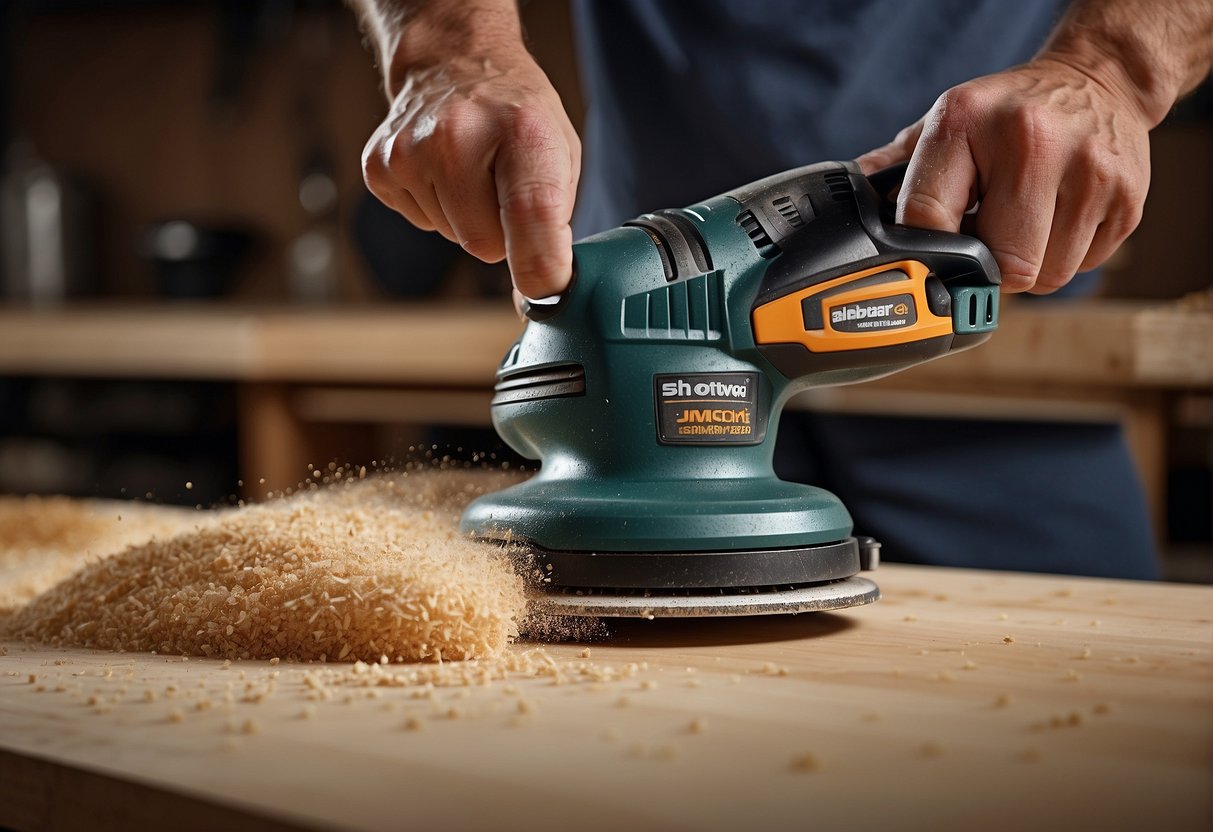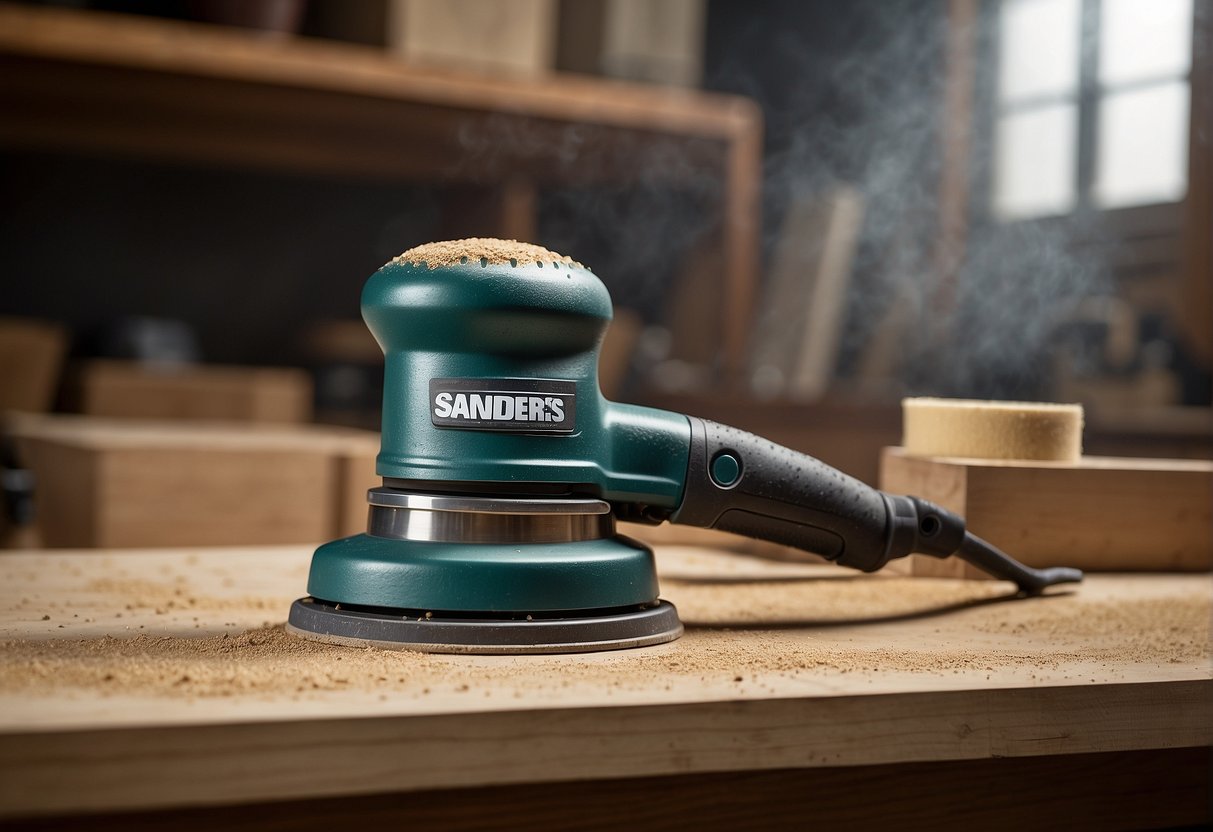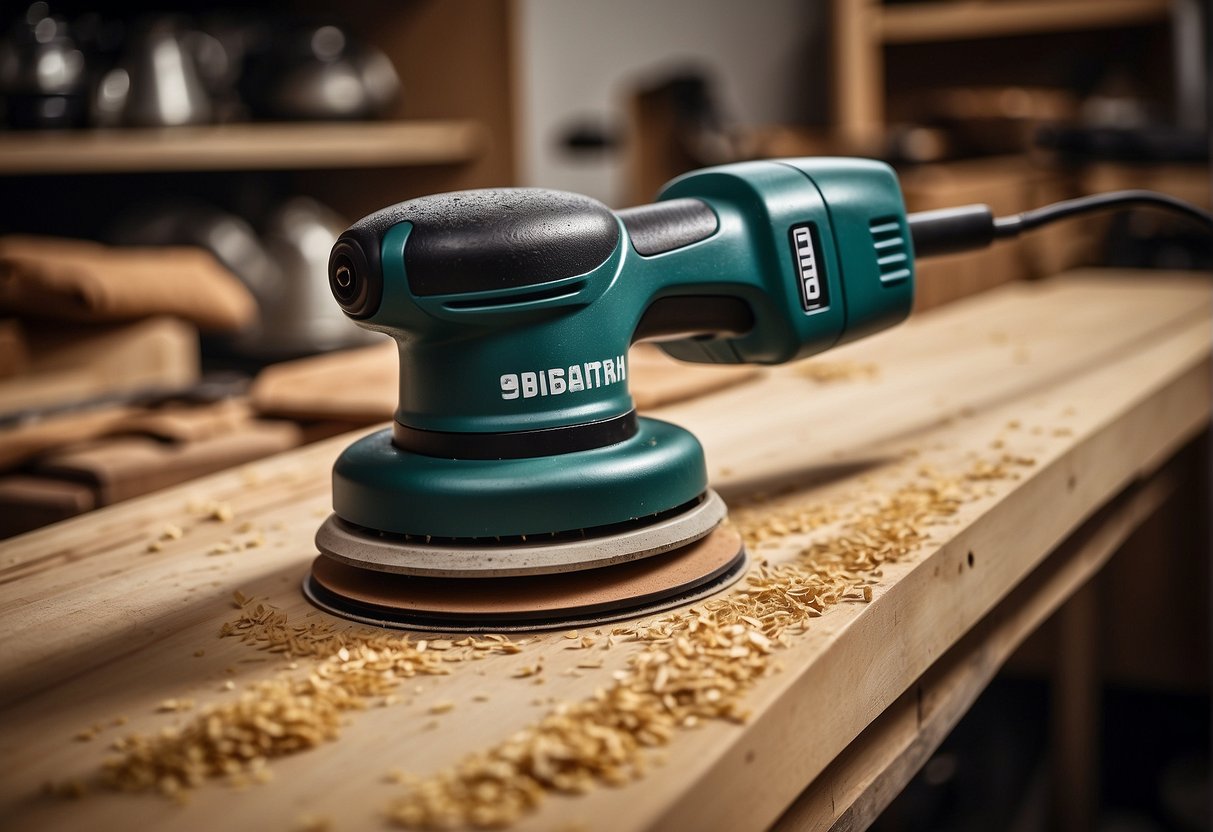When it comes to sanding, there are a variety of tools that can be used to achieve a smooth, even surface. Two of the most popular types of sanders are the orbital sander and the detail sander. While they may look similar at first glance, there are some key differences between the two that make them better suited for different types of projects.
Understanding the Basics of Sanders
Sanders are power tools that use a sandpaper attachment to remove layers of material from a surface. They are commonly used in woodworking and other DIY projects to smooth out rough edges and prepare surfaces for painting or staining. There are many different types of sanders available, each with its own unique features and benefits.
Comparing Orbital and Detail Sanders
Orbital sanders and detail sanders are two popular types of sanders that are commonly used in woodworking and other DIY projects. Orbital sanders are larger and more powerful than detail sanders, and are typically used for sanding large, flat surfaces. Detail sanders, on the other hand, are smaller and more maneuverable, and are designed for sanding tight spaces and hard-to-reach areas.
Key Takeaways
- Orbital sanders are ideal for sanding large, flat surfaces, while detail sanders are better suited for sanding tight spaces and hard-to-reach areas.
- When choosing a sander, it’s important to consider the type of project you’ll be working on and the material you’ll be sanding.
- Both orbital and detail sanders can be used to achieve a smooth, even surface, but they each have their own unique features and benefits.
Understanding the Basics of Sanders
As a woodworker, sanding is an essential part of the job. Sanders are power tools that make sanding much easier and faster. There are different types of sanders available in the market, and each has its unique purpose. In this section, I will discuss the basics of sanders and the main differences between two popular types of sanders: the orbital sander and the detail sander.
Orbital Sander
An orbital sander is a versatile power tool that sands surfaces in a circular motion. It is ideal for large, flat areas such as tabletops, doors, and floors. The sanding pad of an orbital sander moves in a random orbital motion, which means it moves in a circular pattern while also vibrating back and forth. This unique motion helps to prevent the sander from leaving marks on the surface.
Orbital sanders are available in different sizes, ranging from small handheld models to large floor models. They are also available in different power options, including corded and cordless models. Corded orbital sanders are more powerful than cordless ones, but cordless sanders offer more convenience and portability.
Detail Sander
A detail sander is designed for precision work, featuring a triangular sanding pad for intricate and tight spaces. It is also known as a mouse sander due to its small size and shape. Detail sanders are ideal for sanding small areas such as corners, edges, and curves. They are also useful for sanding hard-to-reach areas such as furniture legs, spindles, and crevices.
Detail sanders are available in different power options, including corded and cordless models. Corded detail sanders are more powerful than cordless ones, but cordless sanders offer more convenience and portability.
In summary, orbital sanders are ideal for large, flat areas, while detail sanders are ideal for small, intricate areas. Both sanders are useful power tools for woodworkers, and the choice between them depends on the specific task at hand.
Comparing Orbital and Detail Sanders
When it comes to sanding, there are a variety of tools available, each designed for specific tasks. Two of the most popular sanders are the orbital sander and the detail sander. In this section, I will compare the design, performance, and sanding motion of these two sanders.
Design Differences
One of the most significant differences between orbital and detail sanders is their design. An orbital sander features a square or rectangular sanding pad that moves in a circular motion. In contrast, a detail sander has a triangular sanding pad that is ideal for sanding corners, edges, and tight spaces.
Detail sanders are typically smaller and lighter than orbital sanders, making them easier to maneuver in tight spaces. However, orbital sanders are more versatile and can be used for larger, flat surfaces.
Performance and Usage
When it comes to performance, both orbital and detail sanders have their strengths. Orbital sanders are ideal for removing rough surfaces and creating a smooth finish. They are also effective at removing swirl marks and other imperfections.
Detail sanders, on the other hand, are designed for precision work. They are ideal for sanding corners, edges, and tight spaces that are difficult to reach with other sanders. Detail sanders are also effective at removing paint and varnish from intricate surfaces.
Sanding Motion and Finish Quality
The sanding motion of orbital and detail sanders is another significant difference between the two tools. Orbital sanders move in a circular motion, while detail sanders move in a random orbital motion. The random orbital motion of detail sanders prevents swirl marks, which can be a problem with orbital sanders.
In terms of finish quality, both orbital and detail sanders can produce a smooth finish. However, detail sanders are better suited for creating a fine finish on intricate surfaces. Orbital sanders are better suited for larger, flat surfaces.
In conclusion, both orbital and detail sanders have their strengths and weaknesses. When choosing between the two, it is important to consider the task at hand and the surface you will be sanding. If you need to sand corners, edges, and tight spaces, a detail sander is the better choice. If you need to sand larger, flat surfaces, an orbital sander is the better choice.
Applications and Material Handling
When it comes to sanding, the choice between an orbital sander and a detail sander depends on various factors, including the type of material being sanded, the size of the surface, and the level of detail required. In this section, I will discuss the different applications and material handling of these two types of sanders.
Woodworking and Furniture
If you are working on a woodworking project or refinishing furniture, an orbital sander is the better choice. With its larger sanding pad, it can cover more surface area in less time. Additionally, the circular motion of the sander helps to prevent swirl marks on the wood. An orbital sander is also ideal for sanding wood floors and removing old finishes.
On the other hand, if you need to sand intricate details or hard-to-reach areas on furniture, a detail sander is the better choice. Its smaller sanding pad and pointed tip allow for more precise sanding. Detail sanders are also useful for sanding spindles, moldings, and other curved or contoured surfaces.
Paint and Varnish Removal
When it comes to removing paint or varnish, an orbital sander is the better choice. Its circular motion and larger sanding pad make quick work of removing old finishes. Additionally, an orbital sander can be used with a sanding disc that has a more aggressive grit, making it even more effective at removing paint or varnish.
However, if you need to remove paint or varnish from a small or intricate area, a detail sander is the better choice. Its smaller size allows for more precise sanding, and its pointed tip can reach tight corners and edges.
Metal and Hardwood
When it comes to sanding metal or hardwood, an orbital sander is the better choice. Its larger sanding pad and circular motion make quick work of removing material. Additionally, an orbital sander can be used with a sanding disc that has a more aggressive grit, making it even more effective at removing material.
However, if you need to sand intricate details or hard-to-reach areas on metal or hardwood, a detail sander is the better choice. Its smaller sanding pad and pointed tip allow for more precise sanding. Detail sanders are also useful for sanding tight corners and edges on metal or hardwood.
In summary, the choice between an orbital sander and a detail sander depends on the specific application and material being sanded. An orbital sander is ideal for larger flat surfaces and quick material removal, while a detail sander excels at precise sanding in tight spots and intricate details.
Features and Functionalities
When it comes to sanding, it’s important to have the right tool for the job. In this section, I’ll discuss the features and functionalities of both the orbital sander and detail sander, so you can determine which one is right for your needs.
Dust Collection and Safety
One important feature to consider when choosing a sander is the dust collection system. Both orbital and detail sanders come with a dust collection system that helps to keep your work area clean and safe. However, orbital sanders tend to have a more efficient dust collection system due to their larger size and more powerful motor.
It’s also important to wear a dust mask and safety goggles when sanding to protect yourself from airborne particles. Always follow the manufacturer’s instructions and safety guidelines to ensure that you are using your sander safely.
Versatility and Control
Another feature to consider when choosing a sander is versatility and control. Orbital sanders are great for larger, flat surfaces and can quickly remove material. However, they may not be as effective on smaller, more intricate surfaces.
Detail sanders, on the other hand, are designed for precision work and can easily reach tight corners and angles. They are great for sanding small areas and getting into hard-to-reach places.
Both orbital and detail sanders come with variable speed settings, which allow you to adjust the speed of the sander to match the task at hand. Some sanders also come with a hook-and-loop system, which makes it easy to change sandpaper.
Sander Ergonomics
Finally, it’s important to consider the ergonomics of the sander. You want a sander that is comfortable to hold and easy to control. Both orbital and detail sanders come with ergonomic designs that make them comfortable to use for extended periods of time.
In conclusion, both orbital and detail sanders have their own unique features and functionalities. When choosing a sander, consider factors such as dust collection, versatility, control, and ergonomics to determine which one is right for your needs.
Selecting the Right Sander for Your Project
When it comes to sanding, having the right tool for the job is crucial. Two of the most popular types of sanders are the detail sander and the orbital sander. While they both serve the same purpose, they differ in terms of their design and functionality. In this section, I will help you determine which type of sander is best for your project.
Project Requirements
The first thing you should consider when selecting a sander is your project requirements. If you’re working on a wood project that requires finishing touches, a detail sander may be the better option. Detail sanders are designed for precision work and can easily reach tight corners and edges. On the other hand, if you’re working on a larger project that requires sanding large, flat surfaces, an orbital sander may be the better option. Orbital sanders are versatile and can handle a range of tasks, from removing old finishes to fine sanding and achieving a polished surface.
Cost Considerations
Another factor to consider when selecting a sander is cost. Detail sanders tend to be less expensive than orbital sanders, making them a great choice for DIY projects or those on a budget. Orbital sanders, while more expensive, are a good investment for those who plan on using them frequently or for larger projects.
When it comes to selecting the right sander for your project, it’s important to consider both your project requirements and your budget. By doing so, you can ensure that you have the right tool for the job and achieve the best results possible.
Frequently Asked Questions
What are the key differences between an orbital sander and a detail sander?
The key difference between an orbital sander and a detail sander is their sanding pad shape and size. Orbital sanders have a round pad and are ideal for sanding large, flat surfaces, while detail sanders have a triangular pad and are designed for sanding tight spaces and hard-to-reach areas.
In what scenarios is a detail sander more advantageous than an orbital sander?
Detail sanders are more advantageous than orbital sanders when working on intricate and detailed projects that require precision sanding. They are also useful for sanding corners, edges, and other hard-to-reach areas.
Can an orbital sander be effectively used for finishing work?
Orbital sanders can be used for finishing work, but they are not the best tool for the job. They are better suited for rough sanding and removing paint or varnish. For fine sanding and finishing work, a finishing sander or a random orbital sander is a better option.
What are the benefits of using a random orbital sander over a standard orbital sander?
Random orbital sanders have a round sanding pad that moves in a random pattern, which reduces the risk of leaving swirl marks on the surface being sanded. They are also less likely to cause damage to the wood grain, making them a better choice for finishing work.
How do palm sanders compare to orbital sanders in terms of use and finish?
Palm sanders are similar to orbital sanders, but they are smaller and easier to maneuver. They are ideal for sanding small areas and hard-to-reach spots. In terms of finish, palm sanders produce a smoother finish than orbital sanders, but they take longer to complete a project.
What considerations should be made when choosing between a belt sander and an orbital sander?
When choosing between a belt sander and an orbital sander, consider the type of project you will be working on. Belt sanders are better suited for heavy-duty sanding and removing a lot of material quickly, while orbital sanders are better for lighter sanding and finishing work. Belt sanders are also louder and more powerful than orbital sanders, so they should be used with caution.

Hi, I’m Sal Muller of Tooltrip.com. My DIY experience led me to understand essential power tools for home projects. Tooltrip.com guides enthusiasts and professionals in choosing right tools for any job. I provide concise top tool reviews for easier, efficient DIY.





